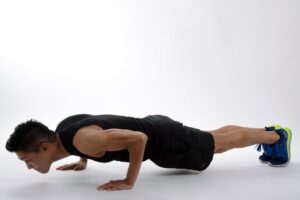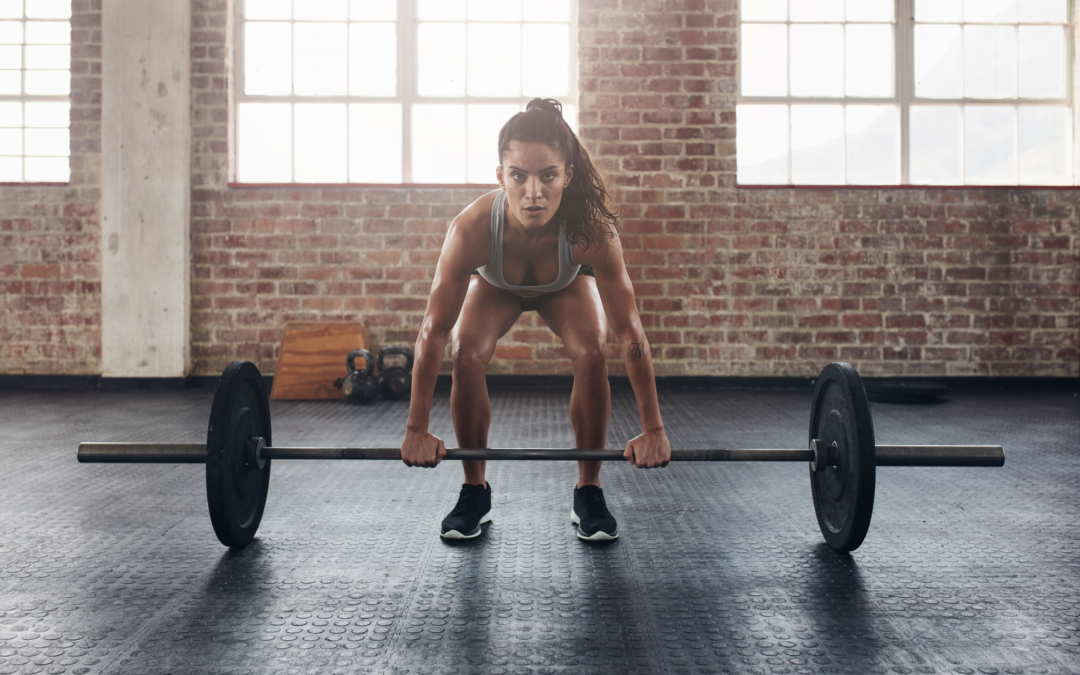Now you understand the benefits of doing strength training as an endurance athlete from our previous OMGuide article, we are going to take a look at some practical implications. This is the stuff that reaps rewards so pay close attention!
Before you start with any strength exercise it is important to understand the correct technique and consider your own safety and the safety of others around you. If you need advice on technique then we recommend asking a personal trainer or gym instructor.
Which exercises should I do?
At its most fundamental level, the exercises you do should somewhat mimic the movements of your sport and/or work on an area of identified weakness. For example, you are a runner that has been suffering with a muscular imbalance between the hamstrings and quadriceps, there is no amount of topless bicep curling in front of a mirror that is going to rectify this problem! Pretty obvious yeah? Good. Squats could well be a better option.
Here at Optimal Movement, we are big supporters of multijoint exercises for endurance athletes. Efficient running involves many joints (not just the knees or hips) working in perfect harmony. As you “toe-off” from the ground your ankle is plantarflexing, your knee and hips will then begin to flex. There are even movements in your spine and shoulders that ensure running efficiency is maximised.
A lot of it comes down to how closely an exercise replicates a sport’s movement. An example of a multijoint exercise may be a deadlift (the knees, ankles and hip joints are all working together). Compare that to a “singlejoint” leg extension where only the knee joint is moving. This isn’t to say that all singlejoint exercises are redundant to an endurance athlete, there are many instances where it is preferential to use one of these exercises to isolate a certain muscle and develop its strength.
Our favourite exercises for endurance athletes:
- Squats
- Split Squats
- Dead Lifts
- Step Ups
- Lunges
- Power Cleans
- Tricep Dips
- Pull Ups
- Lat Pull Downs
Some of these exercises are more advanced than others. If you need advice on technique, set & rep numbers or recovery periods then please get in touch or liaise with a personal trainer.
How often should I do them?
We like the “little and often” approach. A huge weight session will leave your muscles feeling fatigued over the next 48 hours or more. Splitting a weekly 1 hour session into 2 x 30 minute sessions will ensure you can get the most out of your other training sessions. Try to space sessions as evenly as possible throughout the week, giving your body enough time to recover. Remember, it is not “during” these sessions when your body adapts to strength training but between the sessions during periods of recovery.
What weights should I use?
You may have heard of the term “1 Rep Max”. This is the maximum amount of weight you can lift for 1 repetition. Loads are then prescribed based on a percentage of this 1 Rep Max weight. For example, lifting 4 sets of 8 reps with a weight of 80% 1 Rep Max. We don’t recommend that you try to find out your 1 Rep Max by engaging in one maximal repetition for each exercise. There are other much safer methods that involve lifting more reps of a lighter load.
So, what about the loads, reps and sets in training sessions? Well this depends on your long term goals, current training load and individual session objectives. It will also depend on your sport. You may think that, because your sport involves multiple repetitions of the same movements, your strength training sessions should consist of the same (many repetitions, many sets and relatively light loads). Actually, for example, much research has proven that heavy-load weight lifting has been quite effective for cycling. The more force you can produce on each pedal stroke at the same cadence, the faster you ride.
When should I start with a programme?
Ideally, strength training will commence for an endurance athlete in the off-season/non-competition phase, initially starting with relatively high loads, a low number of reps and high number of sets. As the competition season approaches and adaptation to the exercises is no longer an issue, loads and sets are decreased whilst rep numbers are increased. This is a simplistic way of looking at the periodization of strength training and each individual will have his or her own unique requirements. That is why we always recommend seeking out expert guidance before commencing any programme.

What if I don’t have access to a gym?
Not to worry! We are big fans of bodyweight exercises. Even if you aren’t prepared to invest in a pair of dumbbells then there are still effective ways of improving your strength. Here are some of our favourite bodyweight exercises:
- Bulgarian squats (sound exciting don’t they!)
- Stability ball hip extensions
- Stability ball jackknives
- Lunges
- Back Extensions
- Press Ups
- Pull Ups
There are ways of making these exercises easier or harder depending on your current level of strength. The “little and often” approach still applies here, just 10 minutes every other day will reap big strength rewards!
Summary
Everyone can feel the benefit of a strength training programme. We understand that you may not have started your sport with the aim of lifting heavier weights — I would definitely rather spend an hour running on hills in the open air compared to getting sweaty in an egocentric weight room. That said, if you have specific goals to achieve or will enjoy your chosen sport more by becoming faster and more efficient, strength training could well be the element that takes your performance to the next level.
